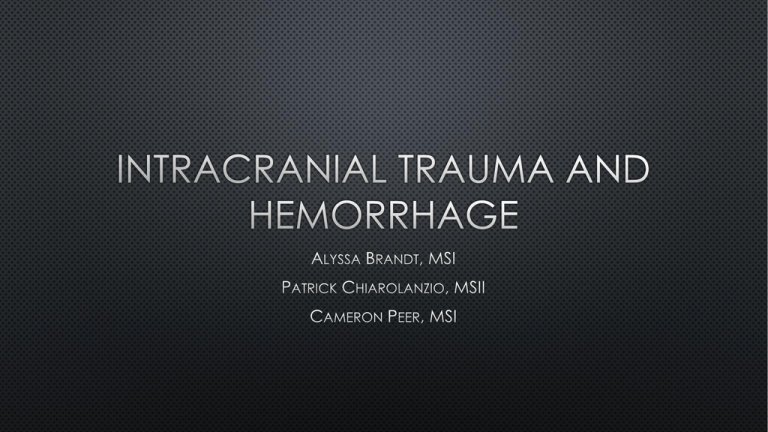PULSE LECTURE_Nov 2_Intracranial Trauma and
advertisement

• • • • • • • • • • Cerebral Blood Supply General Organization of the nervous system Brain & spinal cord • • • • • • • • • • • • • • • • • • • • • • • • • • • • • • • • • • • • • • • • Edema results from inflammatory reaction to cerebral injury Loss of Auto-regulation Brainstem & Pons = Respiratory Centers Cardiovascular Collapse Cushing Reflex: (Impending death) Hypertension Bradycardia Respiratory issues/apnea Headache Nausea Complex Loss of Consciousness Picture with blood warning! Frontal Lobe Contusion Diffuse Axonal Injury w/ Internal Shearing • • • • • • • • • • • • • Moderate Traumatic Brain Injury • Loss of consciousness for between 15 minutes and several hours, followed by multiple weeks of confusion Severe Traumatic Brain Injury • Loss of consciousness for 6 hours or more • Patients who are comatose or in a vegetative state • • • • • • • Concussions can be caused by a blow to the head, or when the head and upper body are violently shaken • Causes the brain to move and hit the skull, causing tissue damage and inflammation • • • MAY result in loss of consciousness • Immediate alteration in brain function • Confusion • Altered consciousness • Nausea • Dizziness • Altered vision • Headache • Light sensitivity • • • A B C • Wearing the correct protective equipment • Helmet technogy • Protective headbands • Following sporting rules • Contact • Spearing











